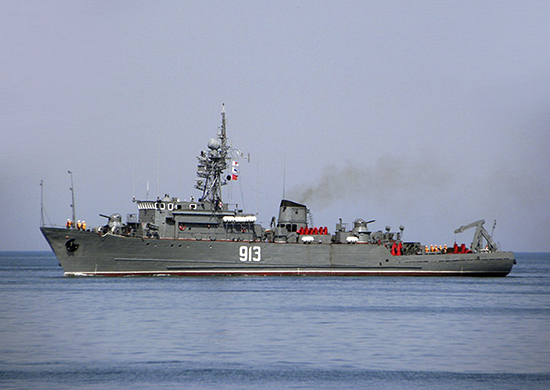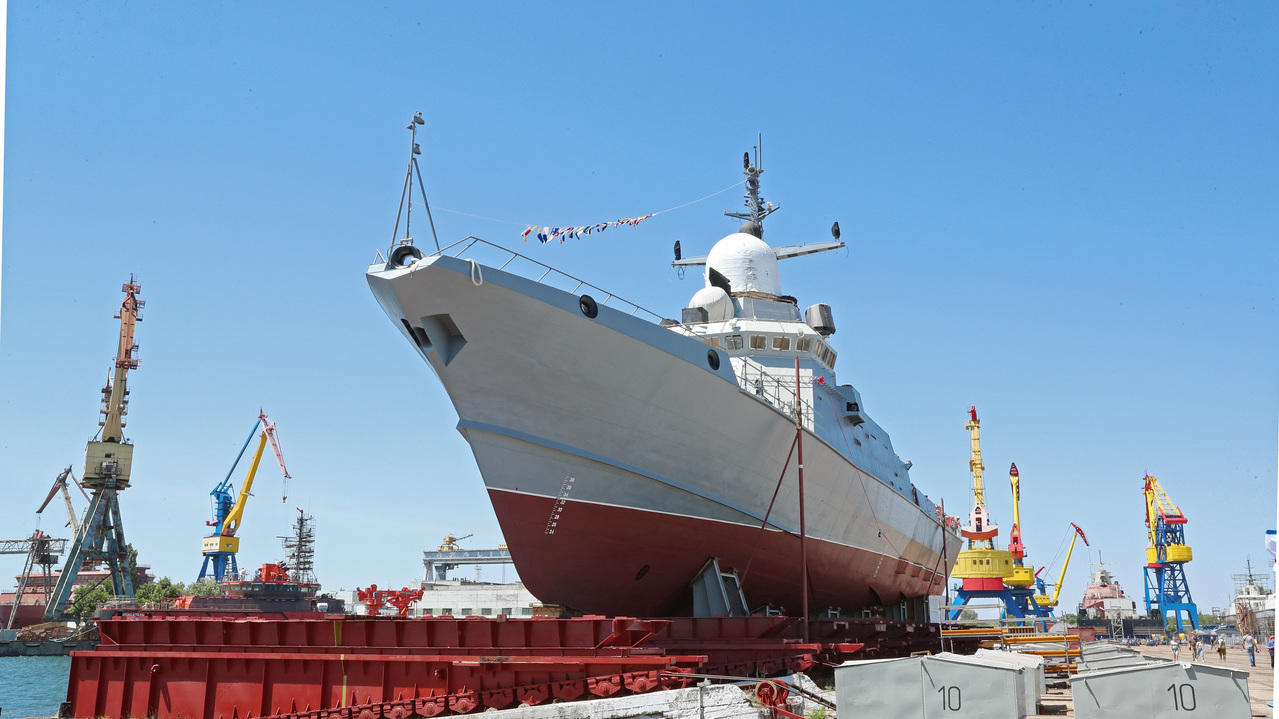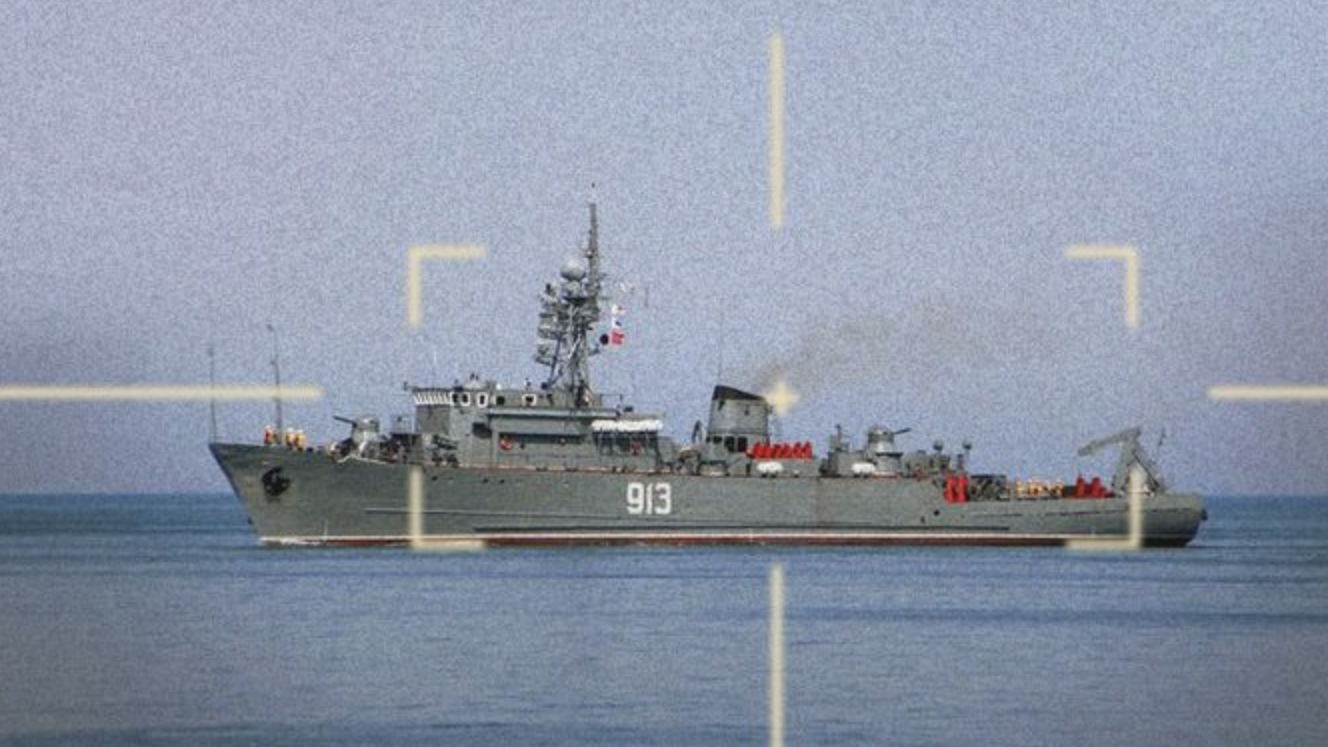While the situation is clearly still unclear, multiple reports suggest that one or perhaps two Russian Navy vessels have been damaged or destroyed in the latest wave of Ukrainian attacks on the Black Sea Fleet. The two vessels in question are the Project 22800 Karakurt class missile corvette Tsiklon and the Project 266M Akvamarin class minesweeper Kovrovets. The first of these, with its capability to launch Kalibr cruise missiles, would be a very significant loss — if confirmed.

At this stage, the limited satellite imagery that TWZ has been able to obtain does not confirm the damage or destruction of either of these vessels, although this remains a possibility.
According to the Ukrainian Ministry of Defense, the minesweeper Kovrovets was destroyed during the night of May 18-19. Unconfirmed reports suggest the vessel was off the coast of Crimea when the attack took place.
“Another bad day for the Russian Black Sea fleet,” the Ukrainian Ministry of Defense wrote in a post on X. “Great job, warriors!”
The vessel, of a type known to NATO as the Natya class, is part of a group of oceangoing minesweepers built for the Soviet Navy during the 1970s and 1980s. The nature of this attack remains unclear. Previously, Ukraine has used aerial drones, uncrewed surface vessels, and air-launched cruise missiles to prosecute similar targets in Crimea.
Meanwhile, Russian officials claimed over the weekend that their forces had repelled strikes on occupied Crimea.
In particular, there are Russian claims that its air defenses shot down nine U.S.-supplied Army Tactical Missile System (ATACMS) ballistic missiles as well as a drone over Crimea, during the same time period.
A Russian-appointed official in Sevastopol, Mikhail Razvozhayev, said that local air defenses were in action around midnight on May 18-19. He added that initial indications revealed no damage caused to civilian infrastructure, although military facilities were not mentioned.
As for the Tsiklon, there have been multiple open-source intelligence accounts — including from Russian military bloggers — that this warship was struck during the ATACMS barrage while it was in the port of Sevastopol. So far, however, Ukrainian officials have not confirmed its destruction.
Sustained Ukrainian attacks have forced the large-scale redeployment of the more valuable Black Sea Fleet assets away from Crimea.
Speaking back in March, Dmytro Pletenchuk, a Ukrainian Navy spokesperson, said that the Tsiklon was the last Russian surface combatant left in Crimea. The warship was also among the newest in the Black Sea Fleet, having been delivered in July last year.

The significance of the Tsiklon to the war in Ukraine is its ability to launch Kalibr land attack cruise missiles, a weapon that has been used repeatedly to strike Ukrainian targets.
While we await more information on these claims, it’s clear by now that Ukraine is repeatedly scoring successes against the Black Sea Fleet. As of February this year, the Ukrainian Armed Forces was claiming that 33 percent of the Black Sea Fleet’s warships had been disabled or destroyed, including 24 ships and one submarine. The latest claims from the Ukrainian military now add one more vessel to the overall tally, presumably the minesweeper Kovrovets.
Not all Ukrainian claims have been supported by satellite imagery, but there has also been a succession of confirmed attacks.
The Russian Navy has been forced to withdraw many of its major warships from ports in Crimea, with assets being relocated across the Black Sea to the east, in Novorossiysk located in Russia’s Krasnodar region. Meanwhile, the commander of the Russian Navy was removed from his post in March, in a move widely seen as a response to Black Sea Fleet losses.
As regards Novorossiysk, a video has also emerged showing air defenses recently at work in the port there. Apparently filmed by a Russian soldier and then posted to social media, the footage shows intense anti-aircraft fire — apparently from machine guns and possibly other infantry weapons — and likely directed against an aerial drone attack.
With Ukraine likely to add to the long-range weapons at its disposal, it seems inevitable that Black Sea Fleet vessels and infrastructure will continue to be targeted. As well as depriving Russia of strike and logistics capacity, and other capabilities that cannot easily be replaced, the Ukrainian campaign has also curtailed Russian naval activity in the western Black Sea, ensuring that it can continue the grain exports that provide a significant economic boost.
We will update this post when we have more information about these latest claims.
Update, May 21: Ukrainian authorities have now claimed the destruction of the second Black Sea Fleet warship, the missile corvette Tsiklon. Using its official account on the social media platform X, the Ukrainian Ministry of Defense stated:
“The Russian Black Sea Fleet lost a warship again! As a result of the attack on May 19, Ukrainian defenders hit a Cyclone Project 22800 Karakurt class corvette. There is no place for Russian scrap metal in Ukrainian Crimea!”
No details were provided on how the vessel was destroyed. However, if unconfirmed Russian accounts prove to be correct, the destruction of two Black Sea Fleet warships in a single operation would be a remarkable combat debut for Ukraine’s ATACMS missile in an anti-shipping role.
Contact the author: thomas@thewarzone.com
